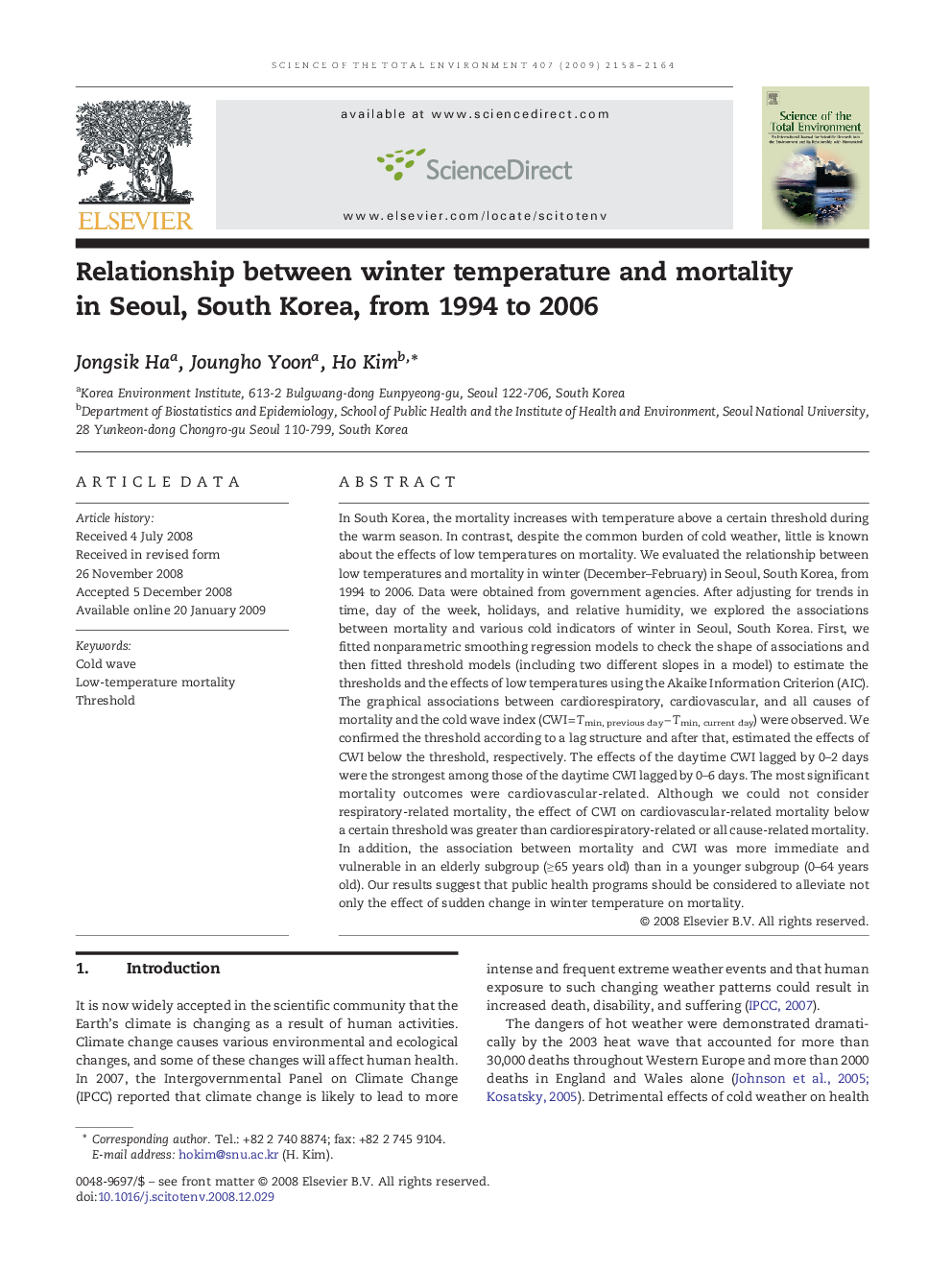| کد مقاله | کد نشریه | سال انتشار | مقاله انگلیسی | نسخه تمام متن |
|---|---|---|---|---|
| 4431700 | 1619903 | 2009 | 7 صفحه PDF | دانلود رایگان |

In South Korea, the mortality increases with temperature above a certain threshold during the warm season. In contrast, despite the common burden of cold weather, little is known about the effects of low temperatures on mortality. We evaluated the relationship between low temperatures and mortality in winter (December–February) in Seoul, South Korea, from 1994 to 2006. Data were obtained from government agencies. After adjusting for trends in time, day of the week, holidays, and relative humidity, we explored the associations between mortality and various cold indicators of winter in Seoul, South Korea. First, we fitted nonparametric smoothing regression models to check the shape of associations and then fitted threshold models (including two different slopes in a model) to estimate the thresholds and the effects of low temperatures using the Akaike Information Criterion (AIC). The graphical associations between cardiorespiratory, cardiovascular, and all causes of mortality and the cold wave index (CWI = Tmin, previous day − Tmin, current day) were observed. We confirmed the threshold according to a lag structure and after that, estimated the effects of CWI below the threshold, respectively. The effects of the daytime CWI lagged by 0–2 days were the strongest among those of the daytime CWI lagged by 0–6 days. The most significant mortality outcomes were cardiovascular-related. Although we could not consider respiratory-related mortality, the effect of CWI on cardiovascular-related mortality below a certain threshold was greater than cardiorespiratory-related or all cause-related mortality. In addition, the association between mortality and CWI was more immediate and vulnerable in an elderly subgroup (≥ 65 years old) than in a younger subgroup (0–64 years old). Our results suggest that public health programs should be considered to alleviate not only the effect of sudden change in winter temperature on mortality.
Journal: Science of The Total Environment - Volume 407, Issue 7, 15 March 2009, Pages 2158–2164